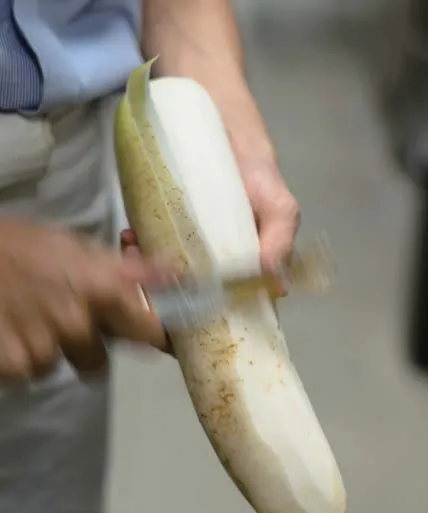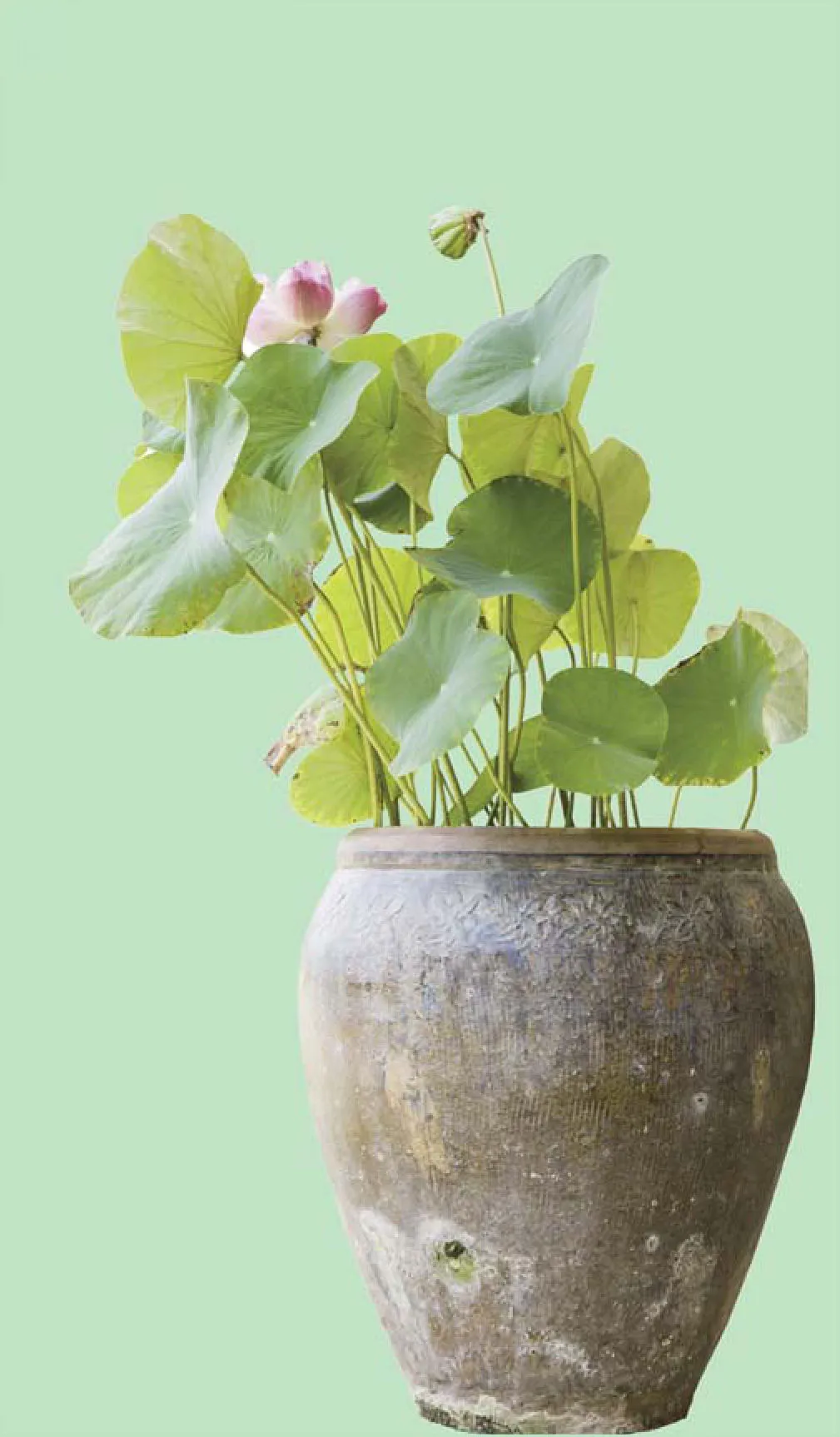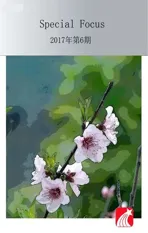The Pursuit of Thrift in the Southern Regions
2017-07-03TextbyHuaMingyue华明玥
Text by Hua Mingyue华明玥
The Pursuit of Thrift in the Southern Regions
江南惜物
Text by Hua Mingyue华明玥

In the southern regions, including Jiangsu, Zhejiang, and Anhui Provinces, the tradition of being thrifty is still valued today.
The edifices of Huizhou merchants in southern Anhui look quite humble from the outside, but a journey inside one such edifice will take one through five or six rows of houses. The sky wells between each connected building are courtyards filled with herbs or other plants. Even droplets of water dripping from the eaves are gathered in buckets for raising goldfish, growing lotuses and watering flowers. Making the most of everything is a timeless virtue.
In Huizhou, there is a unique local stew made of white turnips and pig’s tailbone, which, after many hours simmering in a clay pot, makes a hearty and warming dish. Using a massive crock the height of a human resting over glowing coals, the locals prepare the nutritious soup to combat the natural humidity of the local climate. All the turnips are peeled beforehand so that the delicate fragrance and tender taste of the soup are not ruined by any bitterness.

Nevertheless, a problem arises when confronted with a basketful of turnip peels to dispose of every day. Should you just throw them away?
The locals believe that the essence of turnips lies in their peels. So, they pickle the sun-dried peels and turn them into a crunchy golden snack. Order a pot of tea in the city and you will be offered side dishes of smoked green beans, dried bean curd, turnip peels, and sunflower seeds free of any additives—a manifestation of the attention to detail and generosity of the locals.
In the southern regions, even sesame residue after oil extraction are sold in pieces as large as bowls to people who grow flowers. The elderly in this area are almost all “flower addicts.” They fill their balconies with jasmines, begonias, peonies, and Chinese roses. The gorgeous peonies thrive in the fertile soil, and the Chinese roses refuse to wither until winter is well due, with their long flowering period making them dependent on oil fertilizers.
Sesame oil shop owners will teach you with patience how much of an oil cake you need for each flower. Compared to fish intestines, the oil is a superior fertilizer. It is clean and does not have a lingering odor even when the flowers are brought indoors.
In fact, these areas are not naturally prosperous—southern Jiangsu is densely populated and has limited land, and southern Anhui and northwest Zhejiang are riddled with mountains. The key to their affluence may actually lie in the people’s thrift, with output from the land and water being fully and efficiently utilized.
(FromFortunately We Still Have Plum Cakes, Huazhong University of Science and Technology Press.)

苏浙皖一带,惜物的传统至今仍在。
我们在皖南看到的每座徽商大宅,外面并不起眼,里面却有五六进的房屋。每一重天井里,都种满花木药材,连屋檐上滴落的“天落水”,都收集起来,用以浇花、养金鱼、种缸莲。“物尽其用”一词,是美德,绝不过时。
徽州的白萝卜炖尾骨,也是烫心暖胃的瓦罐菜。主人用一人多高的炭火大瓦缸来炖这些补身的汤水,以驱除凹地的湿气。所有的白萝卜都要事先去皮,炖出来的萝卜汤才鲜香清甜,没有一丝苦味。
但问题是,每天要削下一小筐萝卜皮,全丢掉吗?
徽州人说,萝卜的精华,全在皮中。他们把萝卜皮晒干腌制,变成金橙响脆的美味。你点一壶茶,熏青豆、小方茶干、萝卜皮和自家炒的、不加一点香料的葵花子,全部奉送。主人是何等精细,又何等慷慨。
在江南,连榨过香油的芝麻渣子,都分成碗大的一坨坨,卖给家中养花的人。江南的老人家多是“花痴”,会养一阳台的茉莉、海棠、牡丹和月季。牡丹有异色,全靠肥力足;月季从春到秋都在开花,消耗太多,也是爱吃“荤”的。
香油店的主人会耐心教你,每棵花下埋多少芝麻渣。这比拿鱼肠子沤的肥好,干净,花盆放在家里也没有异味。
说起来,苏南人稠地少,皖南多山,浙西北也是,条件并不算太好。但这些地方竟那么富庶,可能就在于,土地河湖里的出产,没有一丝一毫的浪费,全用在该用的地方。
(摘自《幸而还有梅花糕》华中科技大学出版社)

